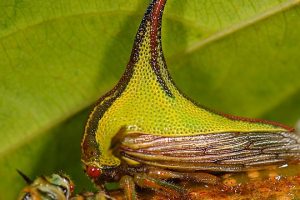
© Shutterstock
A look into the efficient and versatile design and structure of honeycombs.
Musa Sattar, London, UK – Deputy Science Editor
Honeycombs are one of the most fascinating structures found in nature. These hexagonal structures are created by bees and serve as the foundation of the hive. The intricate design of honeycombs has been the subject of study for centuries and continues to fascinate scientists and engineers alike.
The hexagonal shape of honeycombs is incredibly efficient. Bees use the least amount of material possible to create the maximum amount of space. The hexagonal shape provides a strong and stable structure that can support the weight of honey and the bees themselves. The walls of each cell are incredibly thin, allowing for maximum space inside the hive. This efficiency is vital for bees to create as much honey as possible for the winter months when food is scarce.
The honeycomb structure is a symmetrical masterpiece, with each hexagon identical in size and shape. Bees have an innate ability to create perfect hexagons without any measuring tools or templates. This symmetry is also a factor in allowing for the maximum amount of honey to be stored in the smallest amount of space possible. The honeycomb structure poses incredible multifunctional properties, such as large space area, good structural stability, high mechanical strength, low density, and buffering humidity fluctuations, together with thermal and acoustic insulation.
Another remarkable aspect of honeycombs is their ability to repair themselves. Bees are constantly making repairs to the hive and use a special substance called propolis to seal any cracks or gaps. Propolis is a mixture of beeswax and resin, and it has antimicrobial properties that help keep the hive clean and disease-free. This ability to self-repair ensures the structural integrity of the hive, protecting the bees from harsh weather conditions.
Honeycombs are incredibly versatile, and their hexagonal shape allows them to be used for both storage and raising young bees. The honeycomb cells are just the right size for the larvae to grow and develop. The hexagonal shape also allows air to circulate, which helps to keep the hive cool and dry.
Moreover, an empty honeycomb weighs less than an A4 sheet of paper, but when filled with honey, pollen, nectar, and bees, it can weigh several kilograms. It is important to grasp how a seemingly delicate substance like wax can create such strong and sturdy structures.
The flawless design of honeycombs has inspired engineers and architects to create structures that mimic their efficiency and strength. For example, the hexagonal shape is used in the design of aeroplane parts and wind turbines. The strength and stability of honeycomb structures have also been used in the design of bridges and buildings. Today, inspired by the honeycomb structure, its applications have been used in various fields, including transportation, architecture, mechanical and chemical engineering, nanofabrication and in biomedicine.
Interestingly, the honeycomb structure is not only found in bees but also in various other natural structures. The bones of animals such as turtles and some fish have a honeycomb-like structure that provides both strength and flexibility. The wings of dragonflies and some birds have a similar structure that allows for maximum lift and stability in flight.
How can we not be in awe of the intricate and flawless design of honeycomb structures, which have inspired engineers and architects for centuries and continue to baffle scientists with their incredible efficiency and strength? According to Charles Darwin, the honeycomb is a masterpiece of engineering that is ‘absolutely perfect in economising labour and wax.’
So how and why did bees learn to use such spectacular designs? Do the unique structures found in nature not intrigue you to search for their Supreme Architect, Who has the power to construct them even through tiny insects?
Further Reading:
https://www.scientificamerican.com/article/the-surprising-architecture-in-bees-honeycombs/
https://phys.org/news/2021-07-bees-optimal-honeycomb.html




Add Comment